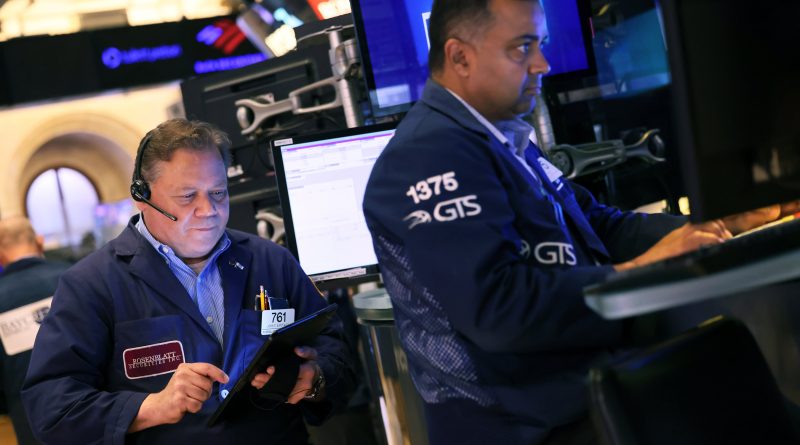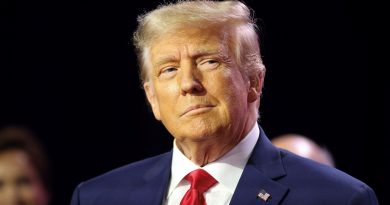Potential end of biggest bond bear market ever has some investors considering fixed income for the first time

Kim Forrest has long considered herself a staunch proponent of stocks. Lately, however, she’s been giving more thought to a more staid part of markets: fixed income. “You kind of get the math of this and you go, ‘Hey, if we think we’re at peak interest rates for this cycle, it might be time to buy some bonds,'” said Forrest, founder of Bokeh Capital Partners. “Oddly enough, even though … God knows I’m an equity girl, I’m thinking bonds. Bonds could be a good thing.” Bonds are starting to make a lot of sense for investors, Forrest said. Treasurys have lost half their value from their peak, according to Bank of America. And, last week, the 10-year Treasury yield hit its highest level in 16 years. Even after pulling back somewhat from those levels, the benchmark yield remains within striking distance of the key 5% threshold. Forrest isn’t alone in her thinking that now might be an attractive entry point for bonds. The potential unwinding of what BofA recently called the “greatest bond bear market in history” has more investors trying to lock in higher yields ahead of potential rate cuts next year from the Federal Reserve. ‘A lot for us to love bonds’ Other investors are building out their bond exposure. Nancy Tengler, investment chief at Laffer Tengler Investments, said her team started adding bonds last summer after getting out in August 2020. She’s been building “very short ladders” for her clients — buying 3-month, 6-month and even 9-month Treasurys — to take advantage of the near-term peak in the yield curve. “We have clients who have income needs, and this is a pretty attractive time to own the short end of the curve,” Tengler said. Meanwhile, Bryce Doty, senior portfolio manager at Sit Investment Associates, said he is extending the duration of maturities for the bonds he’s buying to try to lock in yields for longer. He said he’s trying to stay in higher quality bonds at the longer end of the curve. Elsewhere, Emily Roland, co-chief investment strategist at John Hancock Investment Management, said told CNBC’s “Closing Bell” this week that she’s bullish on bonds for the first time in years. “I’ve been doing this job for about a decade now,” Roland said. “This is actually the first time that we’ve been overweight bonds in portfolios. It takes a lot for us to love bonds.” To be sure, Roland is not sure how much longer bonds will remain attractive. In fact, she expects she will go back to being overweight stocks in time after the downshift in yields plays out, saying equities remain a “much more powerful compounder of wealth over time.” However, fixed income strategists say that bonds will continue to remain attractive as the U.S. is unlikely to have rates held near zero as it had over the prior decade. “We don’t think that we’re gonna go back to the low-interest rate environment that we just came out of. So we don’t we don’t think that it necessarily has to be a trade off necessarily between stocks and bonds,” said Lawrence Gillum, chief fixed income strategist at LPL Financial. “We think both are viable asset classes again.” Investor plays For those interested in adding exposure, Bokeh Capital’s Forrest recommends investors skim maybe 10% to 20% of their equity exposure into government bonds or high quality corporate debt. Meanwhile, Sit Investment’s Doty and LPL Financial’s Gillum said individual core bond funds and ETFs that track the Bloomberg Aggregate Bond Index would be a good place to start. Gillum also recommends ladder portfolios to navigate the current interest rate volatility in markets. The iShares Core U.S. Aggregate Bond ETF (AGG) is down by more than 11% this year, but higher by more than 4% just this week. The Vanguard Total Bond Market ETF (BND) is off by more than 2% in 2023, but greater than 1% on the week. Separately, Sit’s Doty thinks investors with a greater risk tolerance should also add some exposure to high yield bonds — about a 5% allocation — saying the risks are likely mitigated after September’s blockbuster jobs report continued to show a resilient economy. Corporations that issue high-yield bonds generally have lower credit quality, meaning they could have greater levels of debt that put them at risk in an uncertain macro environment. “If you have large-cap equities, I think it’d make a lot of sense to move a piece of that into high yield and investment grade bonds,” Doty added. “And you’ll end up with a more stable portfolio without really giving up much return. In fact, you might even be enhancing your return.” Looming risks Of course, there are risks ahead that could drive yields higher, meaning prices could drop for investors. One possible “wildcard” on the horizon is a potential shutdown if the government fails to agree on a spending bill by the Nov. 17 deadline, Doty said. Depending on how markets take the news, that could potentially drive a selloff in bonds, he said. Still, Doty expects the risk is skewed to the downside. Notably, he expects the breakout of the Hamas-Israel conflict over the weekend that spurred a flight to safety into Treasurys could mean near-term peak is in for yields. Before this weekend, Doty said he expected the 10-year yield would top 5%. On Wednesday, four days after the start of the war, the benchmark yield hit 4.544%, or its lowest level since last month. “So a year from now, I can’t imagine the Fed not having cut rates,” Doty said. “And it just seems like yields will be lower across the board.”
Source – CNBC




